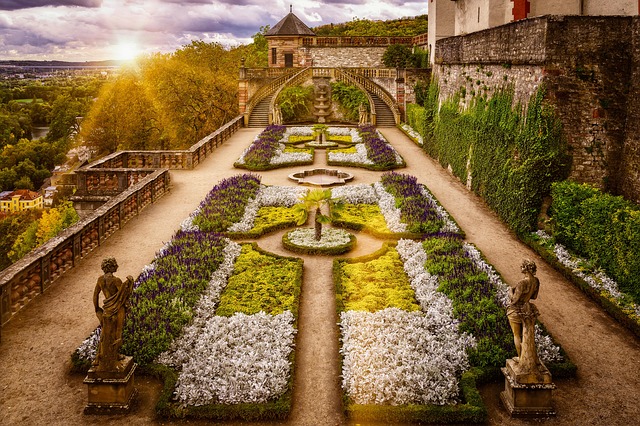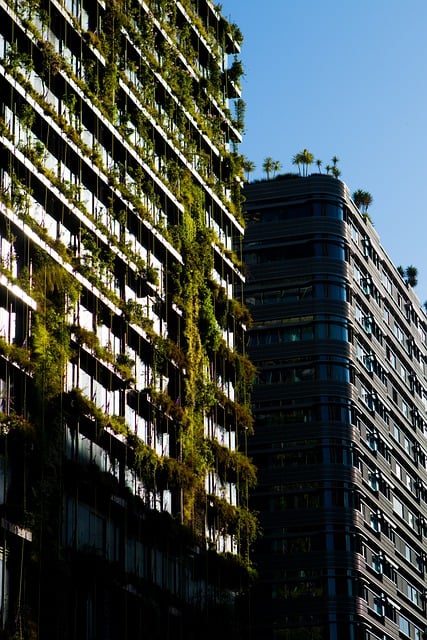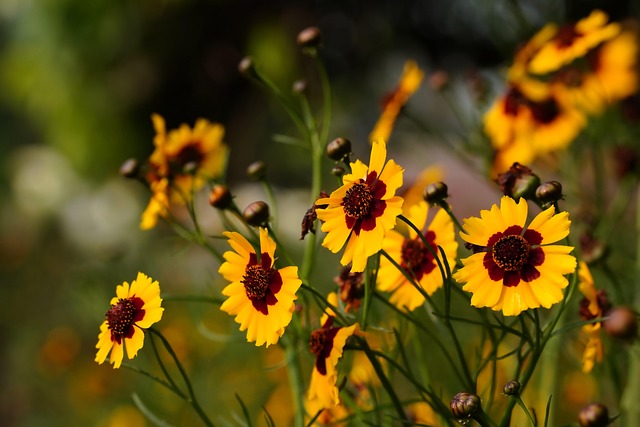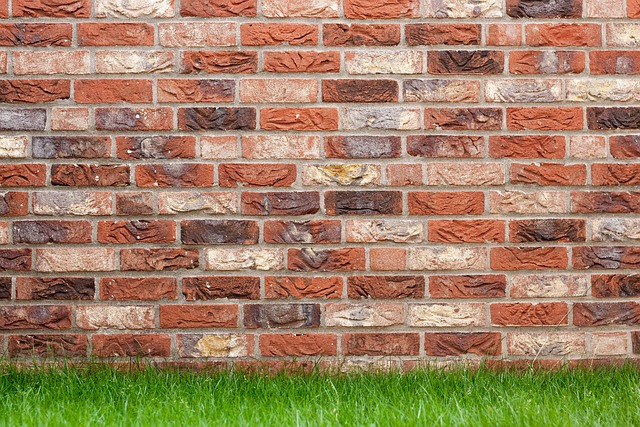Modern vertical garden design is a growing trend in compact urban living, transforming walls into green spaces that maximize limited square footage, enhance air quality, and provide calming environments. These eco-friendly solutions require careful planning for lighting, ventilation, and maintenance but offer various customizable options and significant environmental benefits. By integrating greenery into vertical surfaces, this innovative approach revolutionizes urban spaces, promising future advancements in technology and native plant species to make vertical gardens more efficient and accessible.
In today’s compact living spaces, embracing nature indoors has become essential. Modern vertical gardens are transforming urban landscapes, offering a revolutionary approach to green spaces. This article explores the surge in vertical gardening, delving into its key components, benefits, and challenges. We uncover creative solutions for implementing these lush features at home and delve into future trends shaping cities with innovative vertical garden designs. Discover how this space-saving modern vertical garden design is revolutionizing urban living.
- Understanding the Rise of Vertical Gardens in Compact Spaces
- Key Components of a Modern Vertical Garden Design
- Benefits and Challenges of Implementing Vertical Gardening
- Creative Solutions for Incorporating a Vertical Garden at Home
- Future Trends Shaping Urban Green Spaces: The Role of Vertical Gardens
Understanding the Rise of Vertical Gardens in Compact Spaces

In today’s urbanized world, compact living is becoming increasingly popular as folks embrace the hustle and bustle of city life. This trend has led to a surge in innovative space-saving solutions, and one of the most captivating answers is the modern vertical garden design. By harnessing the power of nature, these gardens transform walls into lush landscapes, bringing greenery indoors and revitalizing living spaces.
The concept of vertical gardening isn’t new, but its integration into modern design has skyrocketed in recent years. This game-changer addresses the need for green oases in cramped areas, whether it’s a tiny apartment balcony or a narrow urban courtyard. With creative modern vertical garden designs, homeowners and designers can create serene environments, enhance air quality, and even cultivate their own fresh produce, all while optimizing limited square footage.
Key Components of a Modern Vertical Garden Design

The core of any successful modern vertical garden design lies in its key components, each playing a vital role in creating an efficient and aesthetically pleasing space for compact living. First and foremost, the choice of materials is crucial. From reusable plastics to wood pallets and bamboo, sustainable options are increasingly popular, allowing for eco-friendly and visually appealing designs. The support structure forms the garden’s backbone, ensuring stability and allowing for optimal plant growth. This can range from simple metal frames to complex modular systems, catering to various space constraints and personal preferences.
Lighting is another essential element, with LED strips or solar-powered lights offering energy efficiency while illuminating the garden. Drainage and irrigation systems are equally important, particularly in urban settings where water conservation is key. These systems ensure plants receive adequate hydration without wasting resources. Lastly, a modern vertical garden design wouldn’t be complete without smart technology integration, allowing users to monitor and control growth conditions remotely through apps, ensuring plant health and making maintenance a breeze.
Benefits and Challenges of Implementing Vertical Gardening

Implementing modern vertical gardening offers numerous benefits for compact living spaces, transforming walls into vibrant green oases. This innovative approach maximises limited real estate by growing plants upwards, creating a visually appealing and eco-friendly solution. Vertical gardens enhance indoor air quality, improve mental well-being, and contribute to energy efficiency through natural insulation. They also promote sustainable living by reducing water consumption and minimising the carbon footprint associated with traditional gardening.
However, challenges exist when integrating this design into compact spaces. Proper lighting and ventilation are essential for plant health but can be difficult to achieve in confined areas. Space planning requires careful consideration of each level’s accessibility and functionality, ensuring plants receive adequate care without crowding the living area. Additionally, maintenance can be more demanding due to the vertical nature of the garden, requiring regular cleaning, pruning, and monitoring to maintain balance and prevent pest issues.
Creative Solutions for Incorporating a Vertical Garden at Home

Incorporating a vertical garden into your compact living space offers a creative and innovative solution for adding greenery while maximizing limited square footage. Modern vertical garden design provides an array of options, from freestanding structures to wall-mounted systems, catering to diverse interior styles and floor plans. For instance, a custom-built, modular system allows you to tailor the height and width to fit any corner or available space, ensuring your green oasis seamlessly blends with your decor.
These designs are not only aesthetically pleasing but also serve as efficient space-saving mechanisms. By growing plants vertically, you can reclaim valuable horizontal surface area for other uses while enjoying the numerous benefits of indoor gardening, including improved air quality and a calming aesthetic. Whether you opt for a sleek, minimalist approach or a more vibrant, artistic display, vertical gardens offer an engaging way to connect with nature in your home, transforming your living space into a verdant sanctuary.
Future Trends Shaping Urban Green Spaces: The Role of Vertical Gardens

As cities continue to grow and space becomes increasingly limited, modern vertical garden design is emerging as a game-changer in urban green spaces. This innovative approach to landscaping integrates greenery into vertical surfaces, transforming concrete jungles into vibrant oases. By utilizing every available inch, vertical gardens offer a sustainable solution for compact living areas, such as balconies, rooftops, and walls. The trend not only enhances aesthetics but also provides numerous environmental benefits, including improved air quality, reduced noise pollution, and increased biodiversity.
Looking ahead, future trends suggest further integration of technology in vertical garden design. Smart sensors can optimize water usage and nutrient delivery, while automated systems can facilitate remote monitoring and management. Additionally, the use of native plant species tailored to specific urban environments will promote ecological balance and reduce maintenance requirements. These advancements promise to make vertical gardens even more accessible and efficient, reshaping urban landscapes and fostering a deeper connection between cities and nature.
Modern vertical gardens are transforming compact living spaces, offering a symphony of benefits from enhanced air quality to space-saving aesthetics. By integrating key components like hydroponic systems and modular structures, these designs cater to urban dwellers seeking a connection with nature. While challenges exist, the future looks bright for vertical gardening, as innovative solutions and technology continue to revolutionize urban green spaces, making them more vibrant and sustainable. Embracing this trend can turn any small space into a lush oasis, enriching our lives and communities in unexpected ways.
